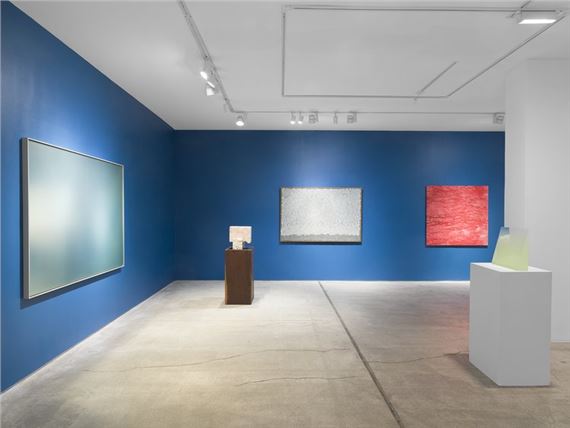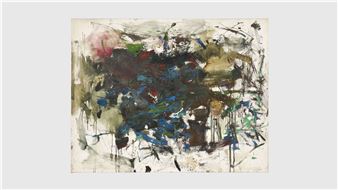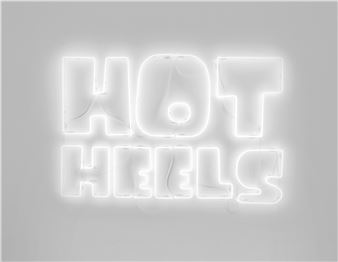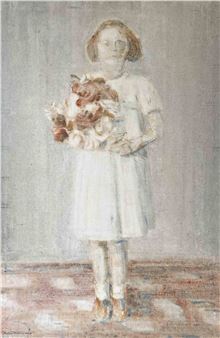East West
Hunter Dunbar Projects is pleased to announce East West, a group exhibition bringing together a group of renowned artists from Asia and the Americas, whose reductionist works find common ground in the minimal and, in some cases, the repetitive. Herein, Asian luminaries such as Yayoi Kusama, Ha Chong-Hyun and Chung Sang-Hwa are juxtaposed with their canonical Western contemporariesŌĆōŌĆōJosef Albers, Alexander Calder, Frank Stella, and others. In East West, the dialogues created between the works highlight the international tenets of Minimalism in the 20th century and beyond. The show will be on view at Hunter Dunbar ProjectsŌĆÖ Chelsea location from May 1st through June 7th, and an opening reception will be held at the gallery on Thursday, May 1st from 6:00pm to 8:00pm.
The 1960s saw the rise of Minimalism in the Western hemisphere. A rejection of the prevailing Abstract Expressionist movement of the decade prior, Minimalism emphasized the viewer's relationship with the formal qualities of material, space, and orderly composition. Donald Judd epitomized the movement in his remark ŌĆ£a work [of art] need only to be interesting,ŌĆØ or rather a work of art needs not ornamentation, figurative parts, or external associations but a ŌĆśwholeŌĆÖ and unified presence. The Eastern minimalists concurrently embraced aesthetics of simplified forms, emphasizing materiality, tactility, and objecthood. As a reaction to the destruction and unrest following World War II, the Korean War, and rising authoritarianism, they engaged with traditional notions of balance and harmony, reflecting on Taoist and Buddhist philosophies.
From Minimalism's forebears to its contemporary leaders, an understanding of the movementŌĆÖs history is essential to appreciate its evolution and impact. On view in the exhibition is Josef AlbersŌĆÖ Homage to the Square (Late Silence) (1960), a painting of three concentric squares, with the central-most, green square radiating out against the darker green and navy structures that it counterposes. Yayoi KusamaŌĆÖs Infinity Nets (2015) features small, white gestural marks that repeat and shift in direction across the canvas, creating uncertain pictorial depth. Joel ShapiroŌĆÖs mahogany sculpture Untitled (2013) abstracts the human body into linear, geometric parts, with the emotion of the figures' extended arms and tilted step made palpable through its simplified form.
Organized by Hayden Dunbar and Benjamin R. Hunter, East West includes works by Young-Il Anh, Josef Albers, Peter Alexander, McArthur Binion, Alexander Calder, Ha Chong-Hyun, Sam Francis, Kathleen Jacobs, Minjung Kim, Yayoi Kusama, Park Kwang-Jin, Scott Lyall, Minoru Niizuma, Ed Ruscha, Chung Sang-Hwa, Park Seo-Bo, Frank Stella, and Hiroko Takeda. The exhibitionŌĆÖs title is inspired by East-West , the landmark 1966 album by The Paul Butterfield Blues Band; the titular track is arguably the first fusion of eastern and western sensibilities in rock music.

Recommended for you
Hunter Dunbar Projects is pleased to announce East West, a group exhibition bringing together a group of renowned artists from Asia and the Americas, whose reductionist works find common ground in the minimal and, in some cases, the repetitive. Herein, Asian luminaries such as Yayoi Kusama, Ha Chong-Hyun and Chung Sang-Hwa are juxtaposed with their canonical Western contemporariesŌĆōŌĆōJosef Albers, Alexander Calder, Frank Stella, and others. In East West, the dialogues created between the works highlight the international tenets of Minimalism in the 20th century and beyond. The show will be on view at Hunter Dunbar ProjectsŌĆÖ Chelsea location from May 1st through June 7th, and an opening reception will be held at the gallery on Thursday, May 1st from 6:00pm to 8:00pm.
The 1960s saw the rise of Minimalism in the Western hemisphere. A rejection of the prevailing Abstract Expressionist movement of the decade prior, Minimalism emphasized the viewer's relationship with the formal qualities of material, space, and orderly composition. Donald Judd epitomized the movement in his remark ŌĆ£a work [of art] need only to be interesting,ŌĆØ or rather a work of art needs not ornamentation, figurative parts, or external associations but a ŌĆśwholeŌĆÖ and unified presence. The Eastern minimalists concurrently embraced aesthetics of simplified forms, emphasizing materiality, tactility, and objecthood. As a reaction to the destruction and unrest following World War II, the Korean War, and rising authoritarianism, they engaged with traditional notions of balance and harmony, reflecting on Taoist and Buddhist philosophies.
From Minimalism's forebears to its contemporary leaders, an understanding of the movementŌĆÖs history is essential to appreciate its evolution and impact. On view in the exhibition is Josef AlbersŌĆÖ Homage to the Square (Late Silence) (1960), a painting of three concentric squares, with the central-most, green square radiating out against the darker green and navy structures that it counterposes. Yayoi KusamaŌĆÖs Infinity Nets (2015) features small, white gestural marks that repeat and shift in direction across the canvas, creating uncertain pictorial depth. Joel ShapiroŌĆÖs mahogany sculpture Untitled (2013) abstracts the human body into linear, geometric parts, with the emotion of the figures' extended arms and tilted step made palpable through its simplified form.
Organized by Hayden Dunbar and Benjamin R. Hunter, East West includes works by Young-Il Anh, Josef Albers, Peter Alexander, McArthur Binion, Alexander Calder, Ha Chong-Hyun, Sam Francis, Kathleen Jacobs, Minjung Kim, Yayoi Kusama, Park Kwang-Jin, Scott Lyall, Minoru Niizuma, Ed Ruscha, Chung Sang-Hwa, Park Seo-Bo, Frank Stella, and Hiroko Takeda. The exhibitionŌĆÖs title is inspired by East-West , the landmark 1966 album by The Paul Butterfield Blues Band; the titular track is arguably the first fusion of eastern and western sensibilities in rock music.

 ARTISTS
ARTISTS
















